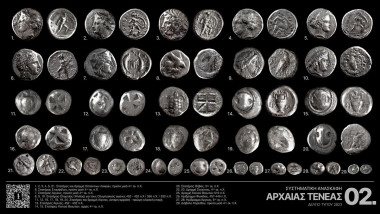Part of Hadrian's 1,800-year-old aqueduct and rare Greek coins unearthed near Corinth
Archaeologists in Greece have unearthed part of one of the largest hydraulic projects from the ancient world: an aqueduct that the Roman emperor Hadrian built to supply water to the city of Corinth.
The remnants of the aqueduct were discovered in October during excavations at the archaeological site of Tenea, an ancient Greek town a few miles south of Corinth, according to a translated statement from the Greek Ministry of Culture and Sports.
Hadrian, who ruled the Roman Empire from A.D. 117 to 138, ordered the aqueduct built to carry water for more than 50 miles (80 kilometers), from Lake Stymphalia in the hills to the west of the city.
Aqueducts were already known in Greece, and Hadrian also had one built to supply water to Athens. But his aqueduct to Corinth is mentioned as a monumental work by ancient writers.
The rediscovered section is just over 100 feet (30 meters) long and runs from north to south alongside a river. It consists of a channel covered by a semicircular roof, both made of stone and mortar.


Add comment